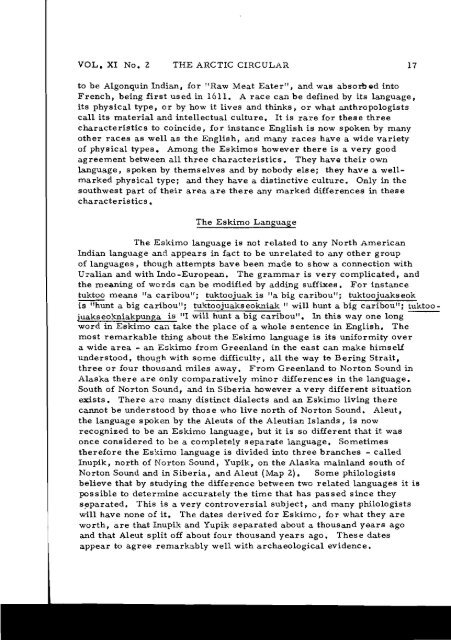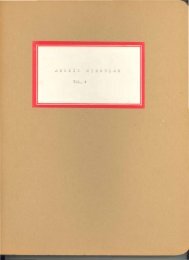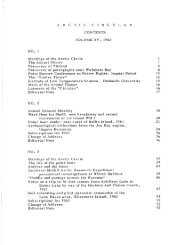Volume 11, 1958 - The Arctic Circle - Home
Volume 11, 1958 - The Arctic Circle - Home
Volume 11, 1958 - The Arctic Circle - Home
You also want an ePaper? Increase the reach of your titles
YUMPU automatically turns print PDFs into web optimized ePapers that Google loves.
VOL, XI No, Z THE ARCTIC CIRCULAR 17<br />
to be Algonquin Indian, for "Raw Meat Eater", and was absorb Old into<br />
French, being first used in 16<strong>11</strong>. A race can be defined by its language,<br />
its physical type, or by how it lives and thinkS, or what anthropologists<br />
call its material and intellectual culture. It is rare for thes e three<br />
characteristics to coincide, for instance English is now spoken by many<br />
other races as well as the English, and many races have a wide variety<br />
of physical types, Among the Eskimos however there is a very good<br />
agreement between all three characteristics. <strong>The</strong>y have their own<br />
language, spoken by themselves and by nobody else; they have a wellmarked<br />
physical type; and they have a distinctive culture. Only in the<br />
southwest part of their area are there any marked differences in these<br />
characteristics,<br />
<strong>The</strong> Eskimo Language<br />
<strong>The</strong> Eskimo language is not related to any North American<br />
Indian language and appears in fact to be unrelated to any other group<br />
of languages. though attempts have been made to show a connection with<br />
Uralian and with Indo -European. <strong>The</strong> grammar is very complicated, and<br />
the meaning of words Can be modified by adding suffixes. For instance<br />
tuktoo means "a caribou"; tuktoojuak is "a big caribou"; tuktoojuakseok<br />
is "hunt a big caribou"; tuktoojuakseokniak" will hunt a big caribou"; tuktoojuakseo~












